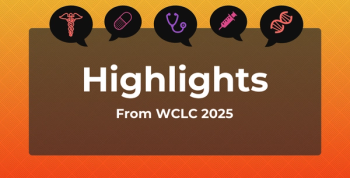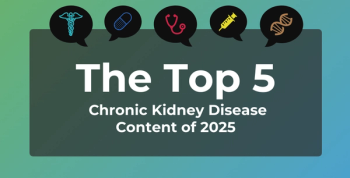
Experiments Give Insights Into Dapagliflozin's Cardioprotective Effects
The authors write that the drug's apparent cardioprotective effects in the angiotensin II stressed mice—the decreased fibrosis, reduced inflammation and oxidative stress—all merit further study.
Nearly 5 years ago, when the first studies emerged showing that sodium glucose co-transporter 2 (SGLT2) inhibitors could trim the number of heart attacks and deaths, the question followed: just how does this happen? The results could not be explained solely by the drugs’ chief mechanism—expelling excess glucose from the body through the urine.
The class appeared to have particularly promising results for patients with heart failure (HF), and indeed, last year’s
Other studies have demonstrated renal benefits of SGLT2 inhibitors. FDA has granted an additional
So, just what does dapagliflozin do to the heart to produce these results? A study published earlier this month in Cardiovascular Diabetology reports on experiments with mice that attempt to answer these questions.
In the study, researchers led by Maiss Arow of Tel Aviv University fed different groups of mice various saline solutions for 30 days. Some groups of mice had leptin deficiencies that would cause them to develop obesity and diabetes, while control groups were wild type. Across both groups, 3 sets of mice were given infusions with angiotensin II (ATII) to induce cardiomyopathy. One group of mice with leptin deficiency was fed dapagliflozin (1.5 mg/kg per day), and another with leptin deficiency received both ATII and dapagliflozin.
AstraZeneca, the maker of dapagliflozin, partially funded the research.
Researchers performed multiple tests, both physical tests to examine the mouse hearts and various biochemical marker tests. They say the results showed:
- Diabetic mice had elevated body weight and increased glucose levels, but normal heart weight, glucose and cholesterol levels compared to the wild type (control) mice. Diabetic mice had normal cardiac dimensions and function, which were similar to the control mice.
- Mice given ATII had significantly higher blood pressure (44%) in both the control and diabetic groups, but no effect on blood glucose.
- ATII treatment of both the control and diabetic mice caused heart wall thickening, and reduced left ventricle functioning.
- Administering dapagliflozin lowered blood glucose in the diabetic mice; in the ATII treated diabetic mice, dapagliflozin reduced blood pressure and significantly improved fractional shortening.
- Dapagliflozin had “no significant hemodynamic effect” in the diabetic mice in the absence of ATII stress, the researchers found.
Key findings were seen in the examination of the heart sections of the mice: in both the control mice and the diabetic mice, effects of inflammation were seen in those given ATII. Meanwhile, a “normal architecture” was seen in the heart tissues of mice treated with dapagliflozin.
Further analysis of the heart tissue showed that fibrosis appeared in the diabetic mice, and in the both the control and diabetic mice that were given ATII. But dapagliflozin reduced the amount of fibrotic tissue in the ATII-treated diabetic mice, and researchers were able to confirm this result with additional assays. In addition, inflammatory markers were higher in diabetic mice who were treated with ATII. Treating these mice with dapagliflozin “had a significant effect on inflammation” in the diabetic mice treated with ATII, but not on the unstressed mice.
“Cumulatively, we conclude that the diabetic heart is highly susceptible to ATII stress inducing changes in cardiac structure such as myocardial hypertrophy and fibrosis,” the researchers concluded. “The effect of dapagliflozin was manifest in the ATII-stressed diabetic heart reducing myocardial fibrosis and improving systolic function.”
Additional tests examined the effects of the drug on cardiac cells in isolation, because, the authors write, “elevation of glucose levels lead to increase cellular [reactive oxygen species] ROS production which was further increased by ATII.” But adding dapagliflozin first, they wrote, reduced oxidative stress.
The authors note that their findings have limits. Improving systolic function, “is of unclear consequences,” they write, and the jury is still out on the effect of SGLT2 inhibition in heart failure with preserved ejection fraction. But the cardioprotective effects of dapagliflozin seen in the ATII-stressed mice—the decreased fibrosis, reduced inflammation and oxidative stress—all merit further study as a novel pharmacological approach, they write.
Reference
Arow M, Waldman M, Yadin D, et al. Sodium-glucose cotransporter-2 inhibitor dapagliflozin attenuates diabetic cardiomyopathy. Cardiovasc Diabetol. 2020;19(7): doi: 10.1186/s12933-019-0980-4.
Newsletter
Stay ahead of policy, cost, and value—subscribe to AJMC for expert insights at the intersection of clinical care and health economics.









































